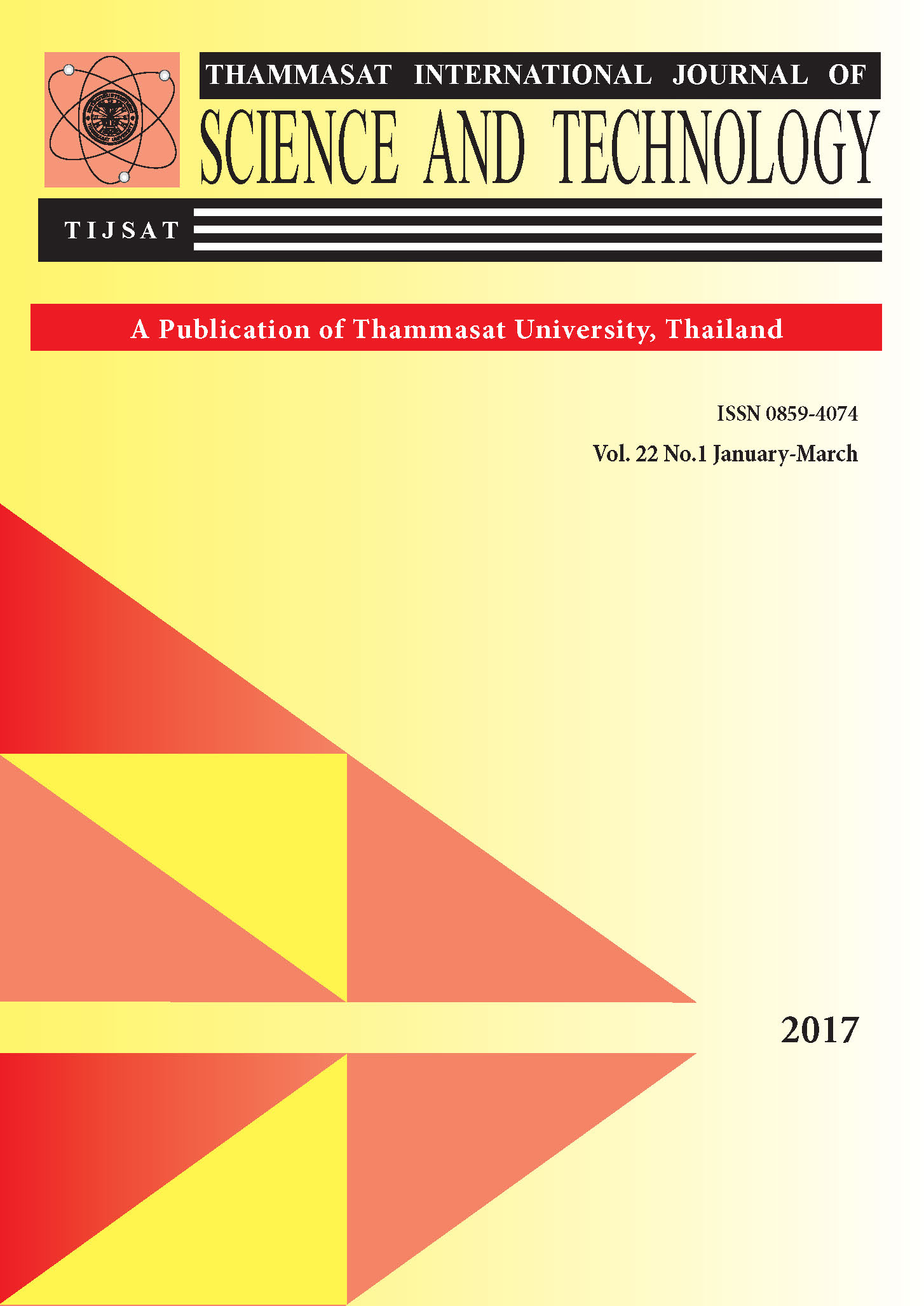Durian and Mangosteen Shell-Derived Biochar Amendment on the Removal of Zinc, Lead and Cadmium
Main Article Content
Abstract
Metal contaminated soils are a major problem in Thailand. Plants that grow in this area will adsorb metal and broad impact across the food chain. Some types of biochar can immobilize metals and reduce the impact of such. This research was limited to study cadmium, zinc and lead adsorption. Durian and mangosteen shell were selected to produce biochar due to their high carbon content. The shells were firstly passed through the pyrolysis process. The chemical characterization of these biochars was then determined. The chemical characteristics of both materials were similar. Both were basic materials with pH around 10. They were high in percentage of C and TOC. Total Cd, Pb and Zn in both biochars were below the maximum allowed threshold according to biochar toxicity standard recommended by International Biochar Initiative. The buffering capability and acid neutralization capability were examined by adding acid and basic solution until the pH reached 2-12. The buffering capability of these two biochars was rather high. The values of acid neutralization capability (ANC) of biochar produced from durian and mangosteen shell were 1,464.80 meg/kg and 1,328.98 meq/kg, respectively. The study included an adsorption isotherm. Freundlich isotherm was a suitable isotherm to explain the adsorption of all three metals by biochar from durian shell, whereas Langmuir isotherm is better to explain the adsorption of metals by biochar from mangosteen shell. The adsorption capacity of both biochars was not much different.
Article Details
How to Cite
Chaiyaraksa, C., Jaipong, T., Tamnao, P., & Imjai, A. (2017). Durian and Mangosteen Shell-Derived Biochar Amendment on the Removal of Zinc, Lead and Cadmium. Science & Technology Asia, 22(1), 87–97. retrieved from https://ph02.tci-thaijo.org/index.php/SciTechAsia/article/view/80886
Section
Physical sciences

